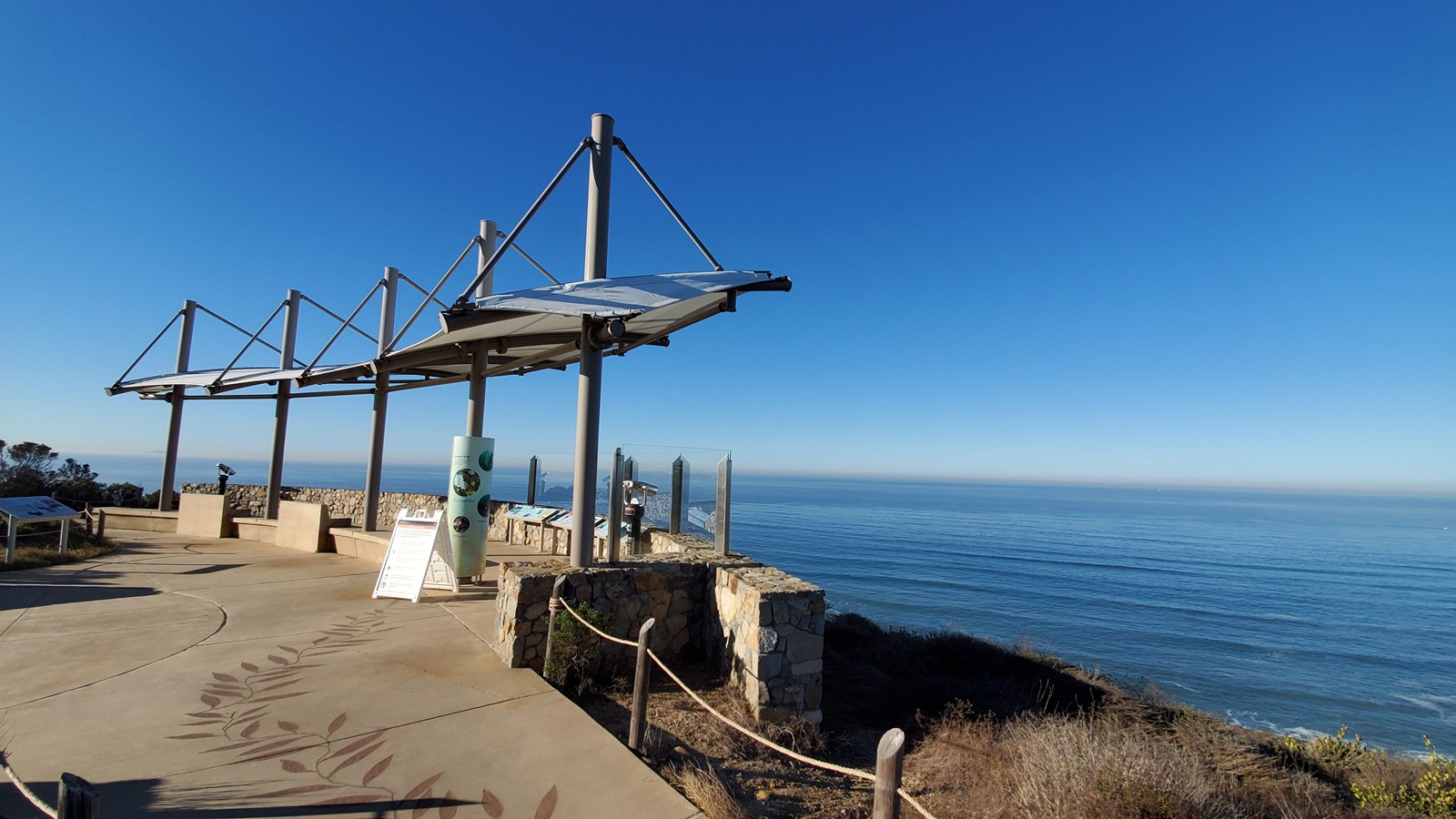Last updated: January 22, 2021
Place
Kelp Forest and Whale Overlook

NPS Photo / T. Jordan
Benches/Seating, Historical/Interpretive Information/Exhibits, Scenic View/Photo Spot, Wheelchair Accessible
Scenic Overlook
Take a break in the shade and enjoy the view! This is a great spot to watch or learn about coastal wildlife. Here you can learn about the Gray Whale migration, our tidepools, and the kelp forests off Point Loma.Each winter, the Pacific Gray Whales pass by the western overlooks of Cabrillo National Monument. After spending the summer feeding in the food-rich waters of the Arctic, the whales swim south along the coast to the bays of Baja California, where they mate, give birth, and nurse their young. Along the way, they pass Point Loma and Cabrillo National Monument, where you can witness their annual winter journey.
From here you can also see the the Rocky Intertidal Zone of Cabrillo National Monument during low tide. Ours is one of the best protected Rocky Intertidal areas in California! The best time to visit the tidepools is during the winter and early spring months, when good low tides occur during park hours. The tide usually covers the tidepools when the park is open, from late spring to early fall.
Just offshore is also a whole underwater forest! “Kelps” are a class of brown algae that can grow to large sizes. They attach to the ocean bottom, and many have flotation devices to buoy themselves to the water’s surface. Several marine algae species can be found in the intertidal area, but the most impressive are the large forests of kelps that grow in water about 25 to 70 feet (8 – 21 meters) off shore. You can see roughly where they grow by looking for the brownish, smooth areas on the water’s surface. In Point Loma the kelp forest is dominated by giant kelp (Macrocystis pyrifera), which grows up to 150 feet (46 meters) long!
Whale Watching Tips!
-
Look for the Blow or Spout - these spouts are created when warm, moist air exhaled from a whale’s lungs meets the cool air at the ocean’s surface. They can be up to 15 feet (4.5 meters) high and each one is visible for about 5 seconds! These can be seen from here even without binoculars.
-
Look for the tail! Gray whales typically spout 3-5 times before taking a big breath for a deep dive. Before their deepest dive, gray whales often display their 12-foot fan-shaped flukes, or tails. The weight of the tail above the whale’s body helps the whale dive deep.
-
Look for a breach and splash. Sometimes gray whales hurl themselves out of the water and plunge back in with a huge splash. This is called breaching. Breaching is a rare occurrence, as these whales are trying to conserve as much energy as they can during their long migration.
-
Look for large white boats with a lot of people onboard. These are whale watching boats. Find one of these and you are almost guaranteed to see a whale spouting nearby.
Access
The Kelp Forest and Whale Overlook is accessed by a small concrete loop trail that starts just south of the Old Point Loma Lighthouse grounds.
